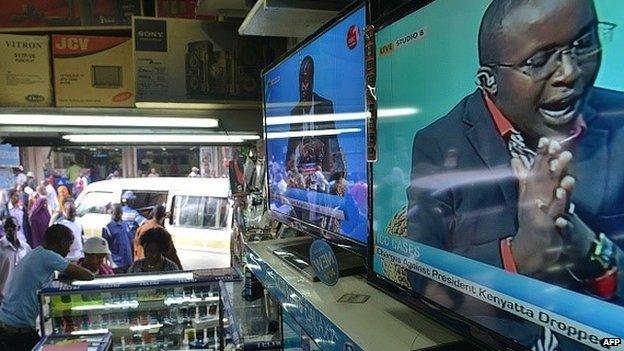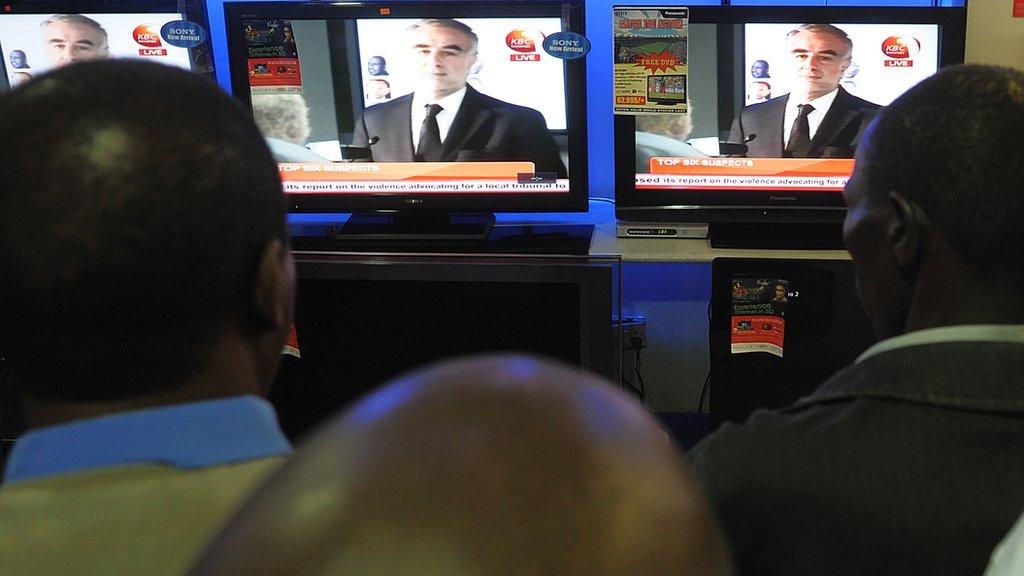Kenyan TV channels to return to air after digital dispute
- Published

Television is the main source of news in Kenya's towns and cities
Three popular Kenyan TV stations are due to return to air, ending a three-week protest in which they turned off their digital signals.
KTN, Citizen and NTV - including its subsidiary, QTV - switched off their signals in a dispute over the move from analogue to digital transmission.
The three private stations had wanted more time for the move, scheduled for February, but the government refused.
Television is the main news source in urban parts of Kenya.
About a third of the country's households own a TV set.
The BBC's Ferdinand Omondi in Nairobi says KTN, Citizen and NTV were the country's most watched networks until their protest blackout.
They are due to turn on their digital signals at 1850 East Africa time (1550 GMT), initially broadcasting in Nairobi and surrounding areas.
Citizen TV's website says its viewers will require universal set-top boxes which receive free-to-air signals.
'Discriminatory move'
The TV stations had wanted the government to postpone the date for the digital migration to give them more time to import set-top boxes for the distribution of their content.
The broadcasters argued that most Kenyans had yet to acquire set-top boxes - but the Communications Authority disputed this.
The government rejected the request for a delayed migration, and ordered the stations to move to digital on 13 February, as planned.
The analogue signals for the three networks were then turned off on the orders of the government.
In protest, the stations switched off their digital broadcasts, claiming that the government move discriminated against them.
After the stations went off air, K24, a private channel owned by President Uhuru Kenyatta's family, saw its audience figures grow by 173%.
Neighbouring Tanzania went ahead with its digital migration on 31 December 2013, the first country to do so of the five members of the East African Community.
The group had agreed to an early switchover to fix any glitches ahead of the June 2015 global deadline to end analogue transmissions.
- Published11 January 2013

- Published5 October 2012

- Published25 April 2023
